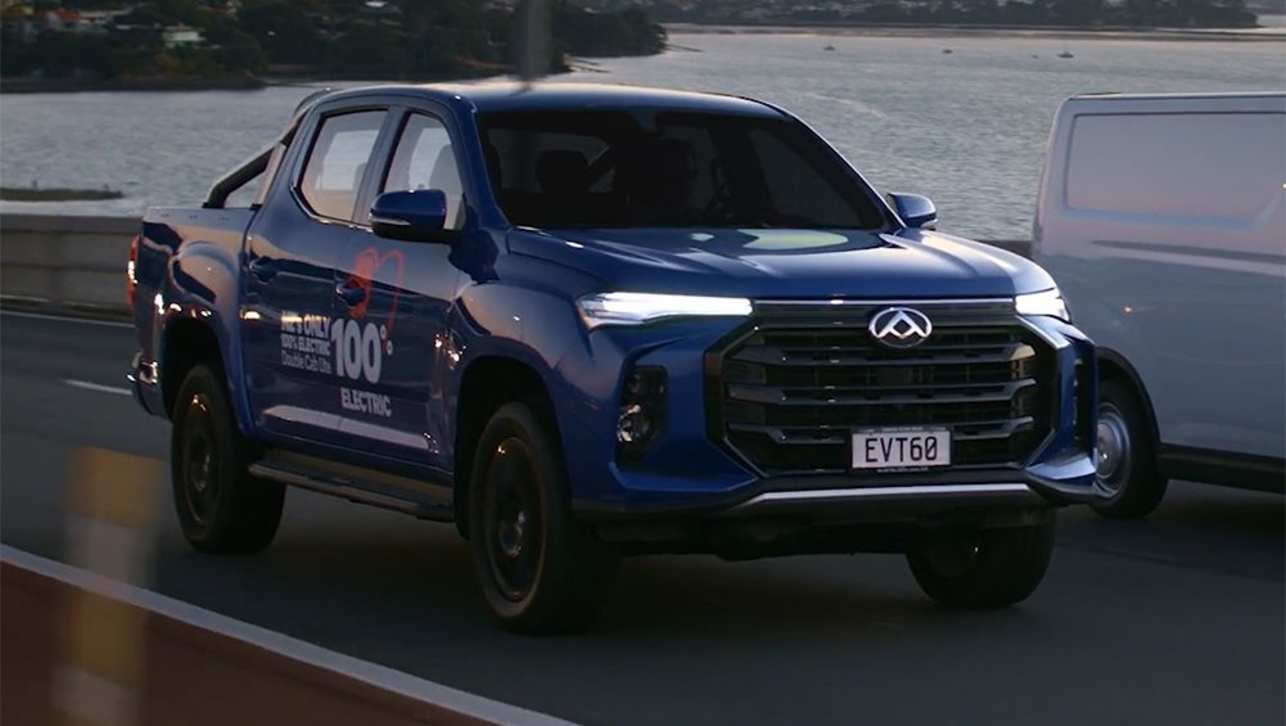An electric van showdown is brewing with the LDV Deliver 9 – known as the eDeliver 9 overseas – expected to arrive before the end of the year to take on the Ford's big E-Transit.
The Chinese van is expected to undercut its European rival by a significant amount of money, mirroring LDV’s strategy with the regular diesel-powered version that has become the dominant player in the full-sized van market over the past year.
Currently, more than $10,000 separates the Deliver 9 diesel from its Transit diesel equivalents, with the LDV ranging from $44,726 to $47,358 (driveaway), compared to $52,590 to $62,090 (before on-road costs) for the Ford.
Though neither manufacturer has yet to reveal pricing or final specification details for the Australian market, the E-Transit is expected to kick off from about $80,000 when sales commence in July or August this year, suggesting that the eDeliver 9’s pricing might begin from as low as the high-$60,000 mark.
With an LDV spokesperson declining to confirm the eDeliver 9’s arrival in Australia, we’re left to speculate what the electric version’s line-up will look like when it lobs in later this year.
In the UK market, where the diesel models have already met with similar success, the electric version is available in medium and long wheelbase and Mid Roof and High Roof sizes.
The LDV’s front wheels are driven by 150kW/310Nm electric motor, while there are up to three battery-pack choices (51.5kWh, 72kWh and 88.55kWh), offering between 237km and 353km of range according to the World harmonised Light vehicle Testing Procedure (WLTP), and is aided by an innovative battery-cooling technology to eke out more mileage, according to LDV brand owner SAIC.
.jpg)
Maximum payload can be up to 1640kg depending specification, while cargo volume is between 9.66 cubic-metres and 11 cubic-metres. Note that top speed is limited to 100km/h, while 0-100km/h is a leisurely 18.4 seconds.
In contrast, the E-Transit is expected to bring up to 12.4 cubic metres of space and a maximum payload of 1616kg.
As Australia’s first-ever large EV van, it will include a 68kWh battery pack for over 315km of range (WLTP). That’s 2.5 times the average daily distance of most van drivers, Ford claims.
Speaking of driving, the E-Transit is said to perform, steer, handle and ride more like a car than its vast size suggests thanks to a 198kW/430Nm electric motor, which sends torque to the rear wheels, while it can reach from 20 to 80 per cent full using a 50kW rapid charger in under an hour. That would be roughly on a par with the LDV. It’s also meant to be one of the safest in terms of driver-assist tech.
No acceleration or top speed numbers are available, but initial reports out of Europe suggest that the Ford is a comparatively quick off the line.

Launching the E-Transit in Europe last week, Ford said that service maintenance and repair cost of ownership “will be 40 per cent lower than equivalent diesel-powered models”.
While Ford will be first with Australia’s first-ever full-sized electric van, pricing may prove the LDV more popular, judging by the diesel versions’ sales performances in the first three months of this year.
Keeping in mind the severe and ongoing supply constraints caused by microchip shortages and other production-hampering issues have affected most vehicles globally, the Transit managed to find just 129 buyers from January to March, compared to 588 examples of the Deliver 9. The represent a 71.3 per cent decline and 177.4 per cent increase in volume respectively.
To put that into context, for the whole of 2021, Ford shifted 1263 Transits to LDV’s 1840 Deliver 9s.
Mercedes-Benz will join the party from 2024 with its yet-to-be-unveiled next-generation e-Sprinter EV van, while others are expected to pitch in even sooner, including Peugeot with the e-Boxer, though that’s yet to be confirmed.
Who will win the first battle of the EV van wars? Stay tuned to find out.





.jpg)
.jpg)



.jpg)
.jpg)


.jpg)


.jpg)



.jpg)
.jpg)
.jpg)

.jpg)




Comments